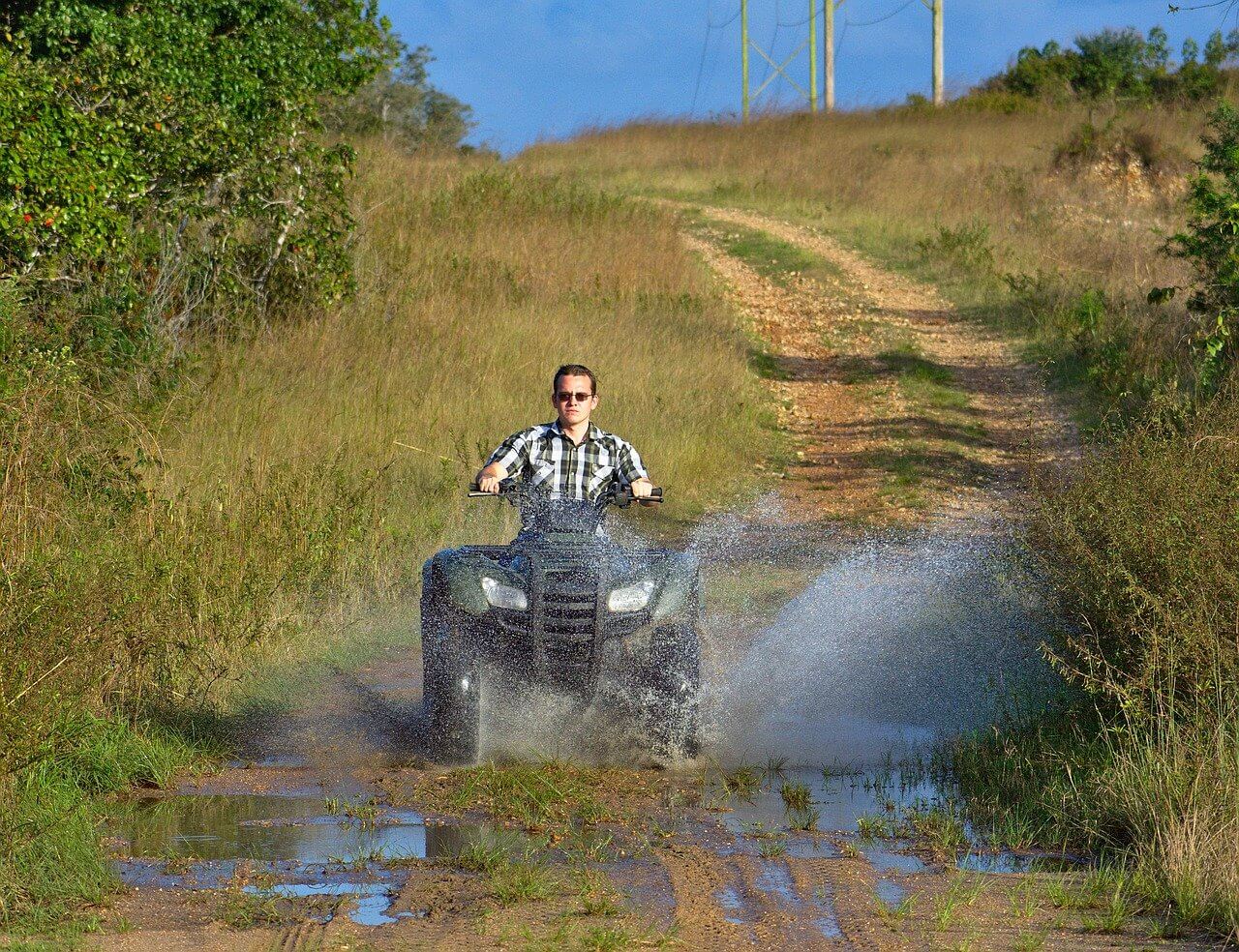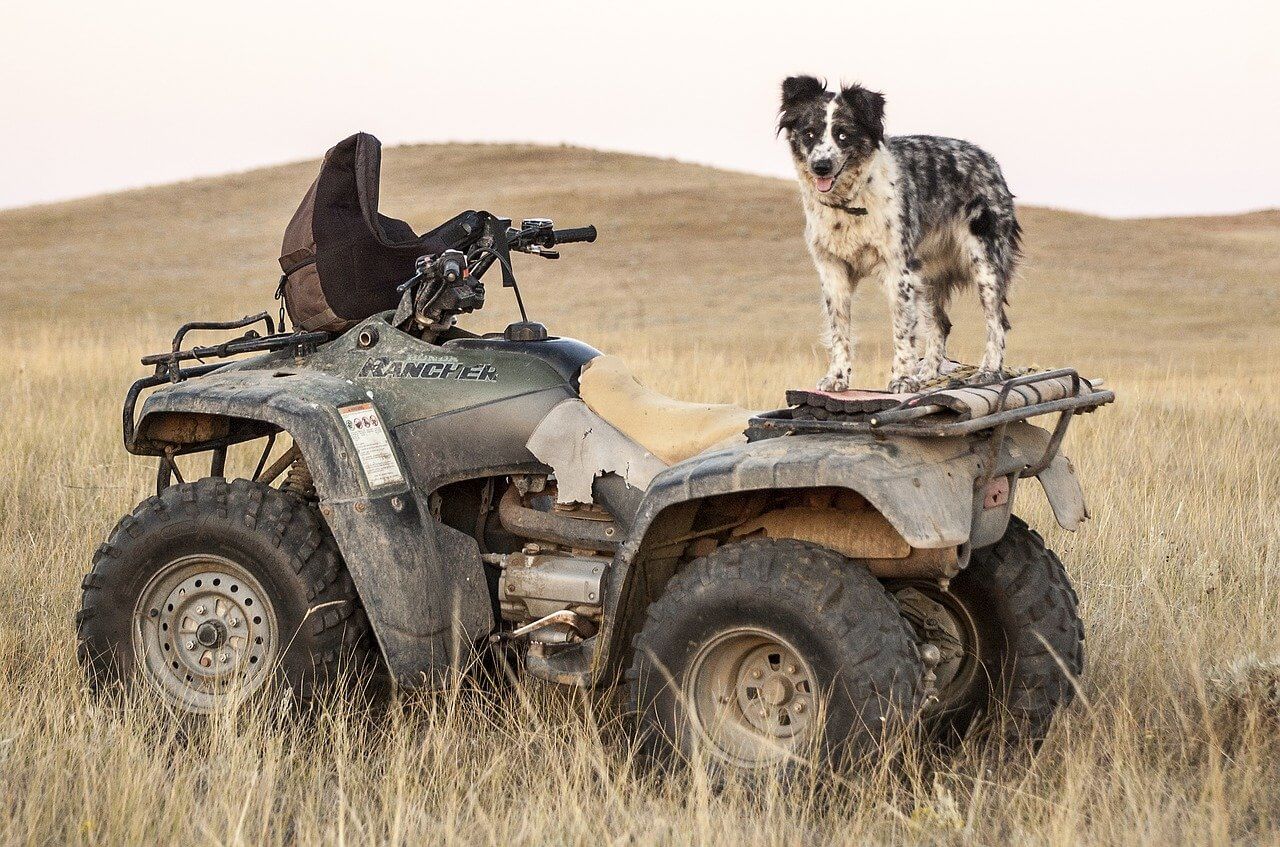When you see others do it, riding an ATV seems fun and even easy. But get on one and it’s not as easy as pressing the throttle and riding off. Without proper practice, it’s easy to tip or even overturn on an ATV. Just look up ATV fails on YouTube.
While older 3-wheel ATVs were known for their instability, four wheelers still require skillful handling especially when going uphill/downhill, going round bends and traversing challenging terrain on your farm.
In this guide, we explain how to ride an ATV safely on different kinds of trails. We focus specifically on riding an ATV for beginners. There is also an instructional video at the end of the article.
What You'll Learn Today
How To Ride An ATV For Beginners

Overall, there are two important points to keep in mind as you practice riding an ATV. One, do not overestimate your ATV’s capability and your skill. Don’t try to tackle a steep hill or carry loads of hay on the first day. That’s how accidents happen.
Start slow and keep practicing.
Two, ATVs are rider-active. You can’t just sit on the seat and let the ATV do everything. You have to constantly shift your weight to keep the ATV balanced.
How Difficult is it to Drive an ATV?
Not hard, especially once you practice enough. ATVs are designed to be easy to drive, easy enough that even kids as young as 10 can ride them.
They are only difficult if you are driving one for the first time. The controls are like those of a motorcycle, not a car. There’s also a lot of balancing involved. So you have to learn to steer, while keeping the vehicle balanced.
ATVs can also be difficult to control, even for more experienced riders, at very high speeds. Certain terrains such as steep slopes can also be challenging.
Something else to keep in mind is that the driving experience will be different and more challenging when pulling a plow, or carrying hundreds of pounds of hay.
But overall, with enough experience, driving an ATV is fairly easy and fun.
Safety Gear
Before getting on the ATV, put on essential safety gear. This includes a helmet, gloves, proper shoes, long pants and a long shirt or jacket. You also need eye protection.
ATV accidents tend to be serious. Without proper protection, you could get seriously hurt.
Pre-drive Check
Once you have the right gear on, check the road-worthiness (or rather, trail-worthiness) of your ATV. The worst thing is to discover a problem with the brakes or wheels when you are on the move or far from help.
Check the brakes, tire pressure, throttle, oil level, fuel level, and any other important components.
It’s also a good idea to check the weather forecast especially if you are going to be a distance away from home. You don’t want to be driving in a snowstorm or rain.
Driving an ATV: The Basics

Now you are ready to drive the ATV. Make sure you are familiar with all the controls, and how to use them. This includes brakes, throttle, clutch and shifter, headlights and others.
We recommend practicing on flat straight paths around your home until you master the throttle, brakes, and steering. It’s also a good opportunity to practice balancing.
Your quad may be different, so the exact driving procedure may vary. For instance, if you have a manual ATV, you need to learn how and when to shift. You start with neutral gear and turn on the engine. Then you engage the first gear and drive off slowly. As you pick up speed, you shift to a higher gear.
With an automatic ATV, you don’t need to do any of this.
Check the user manual for your ATV for guidance on how to start and drive it.
Driving an ATV Around Corners and Bends
Driving an ATV on a straight path is, well, straightforward. You just need to control speed and gears. The first place where the ATV will demand more from you is when going around a corner or bend.
The first step is to slow down when approaching a bend. It’ll give you more control over the ATV. But don’t slow down too much or coast, maintain a decent speed to maintain momentum as you round the bend.
At the same time you start turning your handlebars, also shift your body weight into the turn to maintain balance. As you correct the ATV after the bend, slowly shift your weight back to the normal position.
Driving an ATV Uphill and Downhill
Even more challenging than corners is driving uphill or downhill. It’s easy for the ATV to tip or overturn.
Here, it’s crucial to be rider-active. Your weight is what will keep the ATV grounded. The golden rule to remember is always shift your weight uphill whether you are going uphill, downhill or traversing across the slope.
When going uphill, you need adequate speed to maintain momentum. Shift into first gear if necessary.
With your feet firmly on the footrests, stand up and bend over the handlebars. This will keep your weight on the front wheels to keep them from tipping. If your ATV cannot reach the top of the hill but you still have momentum, make a U-turn while shifting your weight uphill (not inside the turn).
When going downhill, shift your weight backwards over the rear wheels and drive slowly, trying to pick a straight path with as few obstacles as possible.
Avoid traversing across slopes if possible, especially slopes with loose rocks or dirt. If you have to, keep your weight on the uphill side and if you begin to slide, turn the ATV downhill.
For additional tips on operating an ATV on different terrains, watch the video below.
Additional Driving Tips
- Terrain on a farm can change without notice. Always watch out for rocks, ditches, fallen trees and other obstacles. If visibility is poor such as when cresting a hill, slow down until you see what’s ahead.
- Go round obstacles whenever possible. If you have to climb over an obstacle, hold the handlebars tightly and get into a low crouch. Keep your elbows and knees flexed to act as shock absorbers.
- Do not drive on paved roads. The ATV can be difficult to control on a paved surface.
- Never back down a hill; the ATV can easily tip. Instead, do a U-turn to go back downhill.
- If, when going up a slope, the ATV stalls and starts going backwards, apply the front brake only. Once it has stopped, apply the rear brake and parking brake then dismount on the uphill side.